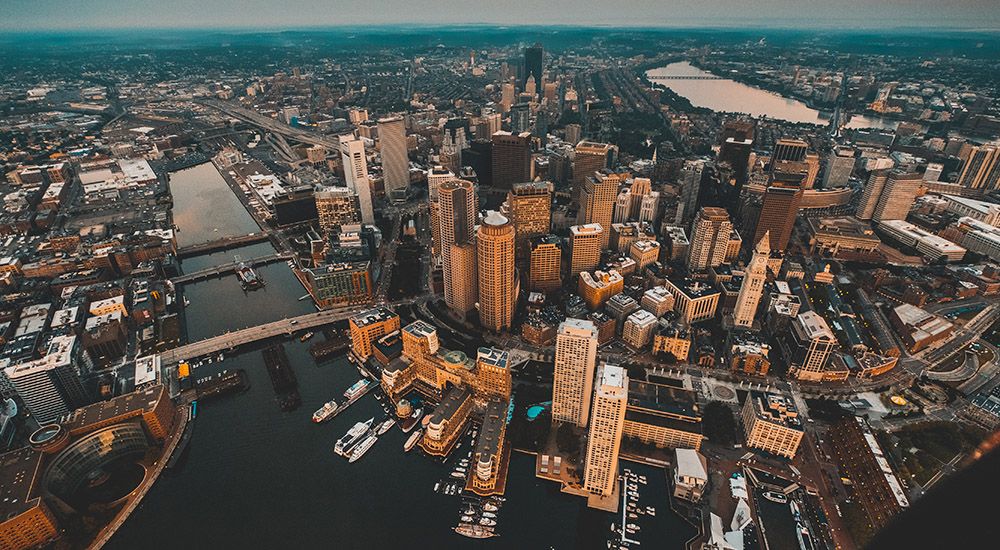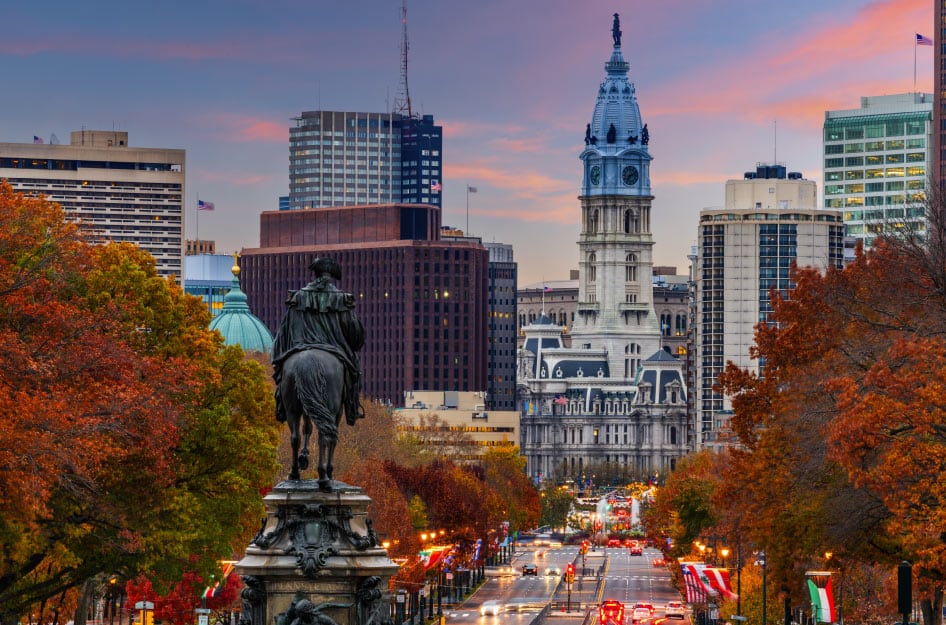Boston Trivia

Boston is known for being at the heart of American history during the Revolutionary War, but its fascinating history doesn’t stop there. Here are some Post-Independence fun facts for you to think about:
America’s first public beach -
The first dedicated public beach in the nation was Revere Beach. Located in the north end of the Boston suburb, it was established in 1896 as a place for citizens to get away from the noise of the city. It became so popular, it was once known as the “Coney Island of the East.” Each year, over a million people visit Revere Beach during the Revere Beach International Sand Sculpting Festival in July.
America’s First Subway -
You can be forgiven for thinking the first subway in the United States was in New York City, but it was actually in Boston! The Tremont Street Subway, also known as the Green Line, is a historic and iconic part of the city of Boston. Built-in 1897, the Green Line is the third oldest subway in the world to use electric traction to power its trains, instead of steam engines, which were more common at the time. The Green Line was also the inspiration for the “T” in the iconic “MIT” logo, which represents the school’s location on the subway line.
Boston Common -
Boston Common was originally established in 1634, which makes it the oldest and first public park in the United States. During the Colonial Era, the Boston area that is now Boston Common was used as a pasture for cows and other livestock. During the Revolutionary War, the park was used as a military training ground and as a staging ground for British troops. It’s from here that the famed British “Redcoats” left for that fateful trip to Lexington and Concord. The park has also been the site of pirate hangings, civil rights protests featuring Martin Luther King, Jr, a mass by Pope John Paul II, and many other historic events.
Boston Light -
Sometimes known as the Little Brewster Lighthouse, the Boston Light was the first lighthouse built in what is now the United States. Constructed in 1716, it's been in continuous use ever since, except for a brief period after the British blew it up as they retreated out of Boston.
Today, visiting Little Brewster Island and the Boston Light can only be done by boat. But if you time it right, you’ll be shown around by a member of the United States Coast Guard, as the Boston Light is the last lighthouse in America to be staffed by the Coast Guard.
America’s First Chocolate Factory -
In 1764 John Hannon and Dr. James Baker opened the very first factory in North America to manufacture the increasingly popular sweet known as chocolate. Hannon was a Quaker who immigrated to the United States from Europe. Having learned the trade on the other side of the ocean, Hannon was determined to be the first chocolate maker to serve the American market.
He located his factory in Dorchester, Massachusetts, just 6 miles from the heart of Boston. Although some people say Hannon eventually returned to England, most believe that in 1779, Hannon disappeared on a trip to the West Indies on a voyage to buy more cocoa beans. Without its primary investor, the company soon ran into financial difficulties and closed. Despite its brief existence, this factory revolutionized the way chocolate was made and distributed across the nation.
It’s not just history that’s everywhere in the city. Bostonians take pride in their local lore and customs. Let’s take a look behind-the-scenes at some of Boston’s most unique attributes.
Beantown -
Why is Boston known far and wide as “Beantown?” While no one seems to be absolutely certain where the name Beantown really comes from, most believe that it’s actually a reflection of Boston cuisine.
Boston’s earliest settlers had a particular love for baked beans in molasses. This is a traditional New England dish that is made by soaking white beans in water overnight, and then boiling them until they are tender. They are then mixed with molasses, salt pork, and spices such as mustard or brown sugar and then baked in a covered pot for several hours.
But that’s not the only nickname for the city. Boston is also known as the “Cradle of Liberty” for its role in the origins of American Independence.
Boston University Bridge -
The people of Boston are particularly proud of the Boston University Bridge that lies over the Charles River. It is one of only 3 places in the world where you can experience 4 “layers” of traffic all at once. If you’re particularly lucky, you might see a boat sailing under a train that’s crossing beneath a car and driving under a plane.
Boston Cream Pie -
Now Massachusetts’s official dessert, the Boston Cream Pie is among the most famous desserts in New England. Believed to have been invented by a chef named Sanzian in 1856, it’s been served at his workplace, the Parker House Hotel, ever since. Sitting in the heart of downtown Boston, the Boston Cream Pie was introduced to the many people who ate lunch and dinner at the hotel’s popular restaurant, and from there, it spread across the country.
America’s First University
Harvard University was founded in 1636, which makes it America’s “oldest institution of higher learning.” Originally intended to be a school for clergy, it has since become the premier university in the United States.
Who are the Boston Red Sox?
The Boston Red Sox haven’t always been the Red Sox. They actually started out on Fenway Park as the Americans, and for brief periods were known by the sports media as the Somersets, the Plymouth Rocks, the Puritans, the Pilgrims, or the Speed Boys. It wasn’t until the other baseball team in Boston (then the Doves, today the Atlanta Braves) gave up their famous red stockings that the Americans snapped them up and became known as the Red Sox.
We’ve been through the history and lore of Boston. But every city has interesting tidbits
that you’d never believe were true. Let’s take a look at some of the State Capital facts.
The Great Molasses Flood -
On January 15th, 1919, a tank of molasses 50 feet tall and 90 feet in diameter burst open. It sent a wave of molasses through the neighborhood. Moving at 35 mph, the 2.3 million gallons of molasses flattened everything in its path. The final tally was 21 dead and over 100 injured. It was one of the worst disasters in Boston History.
The Fig Newton -
Just to the west of Quincy where the first dunkin’ donuts were opened, Boston proper, Beacon Hill, and the Boston Harbor where the Boston Tea Party took place lies the town of Newton, Massachusetts. This is the namesake of the Fig Newton, a popular cookie created by the Kennedy Biscuit Company. Now known as Nabisco, the Kennedy Biscuit Company also created the Oreo and the Lorna Doone.
That Explains the Boston Drivers -
It wasn’t until 1903, several years after the introduction of the automobile, that Boston started testing and licensing potential drivers. Until then, there was no way of knowing if the person behind the wheel had even driven before.
America’s First Christmas Grinch -
Between 1659 and 1681, Christmas was banned in Boston. The “Penalty for Keeping Christmas” was a law enacted under the Puritan rule in the Massachusetts Bay Colony in 1659. For the next 22 years, anyone found celebrating the holiday by taking the day off of work, or having a “feast” could be fined. One of the major proponents of the ban on Christmas was the Reverend Increase Mather, best known as the father of Cotton Mather of Salem Witch Trial fame.
A Building as a Weathervane -
If you find yourself wandering the streets of Boston and you’re curious about the weather, just look for the John Hancock Tower west of the State House. At the top, you’ll see some colored lights. To figure out what they mean, just remember this rhyme:
Steady blue, clear view.
Flashing blue, clouds due.
Steady red, rain ahead.
Flashing red, snow ahead.
If you’re interested in exploring Boston and seeing some of these sights for yourself, start planning your trip with GL Travel! Reach out to us today to see how we can help you create a memorable experience for your students.




